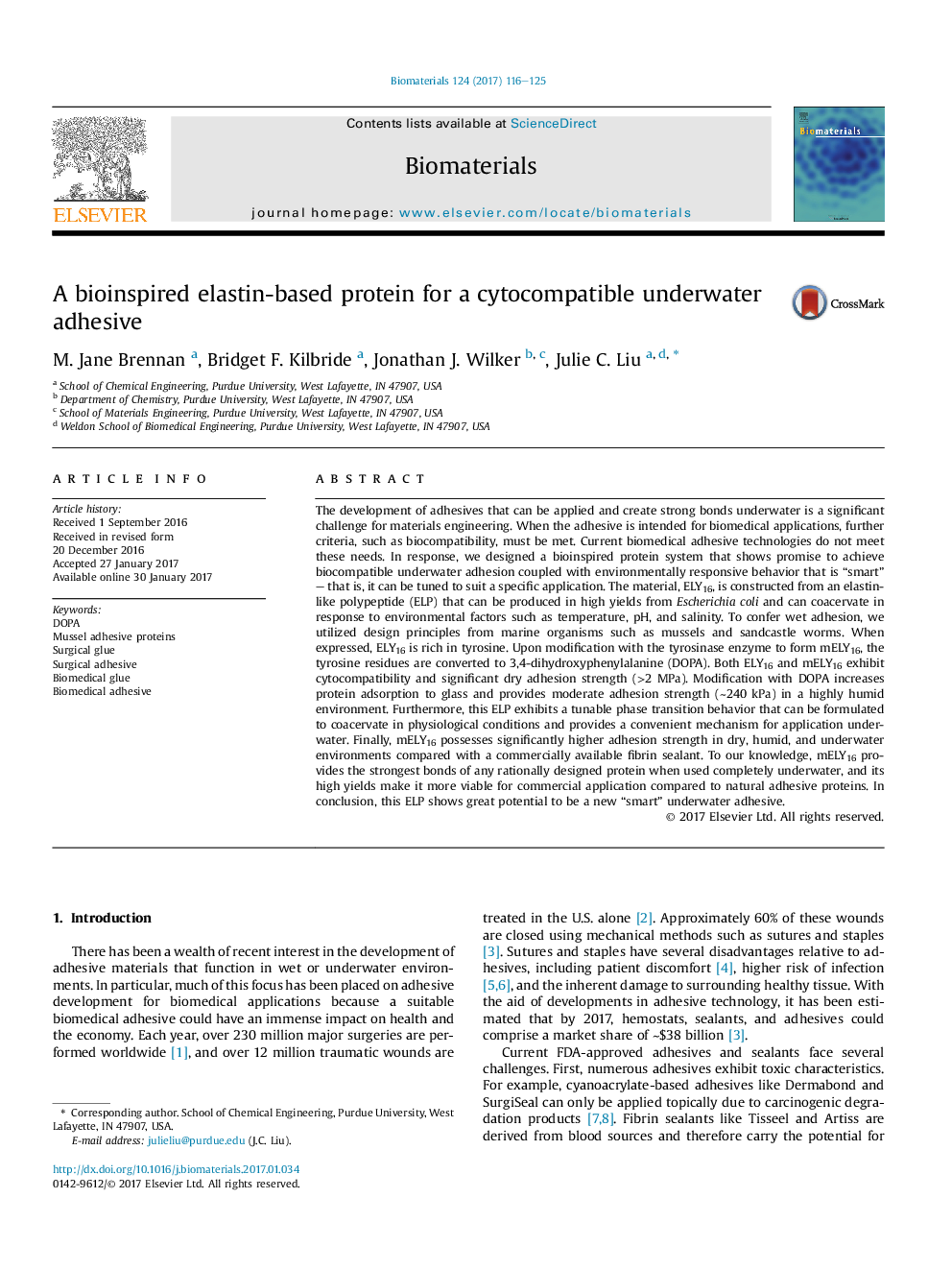| کد مقاله | کد نشریه | سال انتشار | مقاله انگلیسی | نسخه تمام متن |
|---|---|---|---|---|
| 6450836 | 1416143 | 2017 | 10 صفحه PDF | دانلود رایگان |

- A protein system was developed to be cytocompatible and provide underwater adhesion.
- Proteins combine characteristics of mussel adhesives and elastin-like polypeptides.
- System has tunable phase transition behavior, allowing for underwater application.
- Adhesion strength of proteins is significantly higher than commercial sealant.
The development of adhesives that can be applied and create strong bonds underwater is a significant challenge for materials engineering. When the adhesive is intended for biomedical applications, further criteria, such as biocompatibility, must be met. Current biomedical adhesive technologies do not meet these needs. In response, we designed a bioinspired protein system that shows promise to achieve biocompatible underwater adhesion coupled with environmentally responsive behavior that is “smart” - that is, it can be tuned to suit a specific application. The material, ELY16, is constructed from an elastin-like polypeptide (ELP) that can be produced in high yields from Escherichia coli and can coacervate in response to environmental factors such as temperature, pH, and salinity. To confer wet adhesion, we utilized design principles from marine organisms such as mussels and sandcastle worms. When expressed, ELY16 is rich in tyrosine. Upon modification with the tyrosinase enzyme to form mELY16, the tyrosine residues are converted to 3,4-dihydroxyphenylalanine (DOPA). Both ELY16 and mELY16 exhibit cytocompatibility and significant dry adhesion strength (>2Â MPa). Modification with DOPA increases protein adsorption to glass and provides moderate adhesion strength (â¼240Â kPa) in a highly humid environment. Furthermore, this ELP exhibits a tunable phase transition behavior that can be formulated to coacervate in physiological conditions and provides a convenient mechanism for application underwater. Finally, mELY16 possesses significantly higher adhesion strength in dry, humid, and underwater environments compared with a commercially available fibrin sealant. To our knowledge, mELY16 provides the strongest bonds of any rationally designed protein when used completely underwater, and its high yields make it more viable for commercial application compared to natural adhesive proteins. In conclusion, this ELP shows great potential to be a new “smart” underwater adhesive.
255
Journal: Biomaterials - Volume 124, April 2017, Pages 116-125